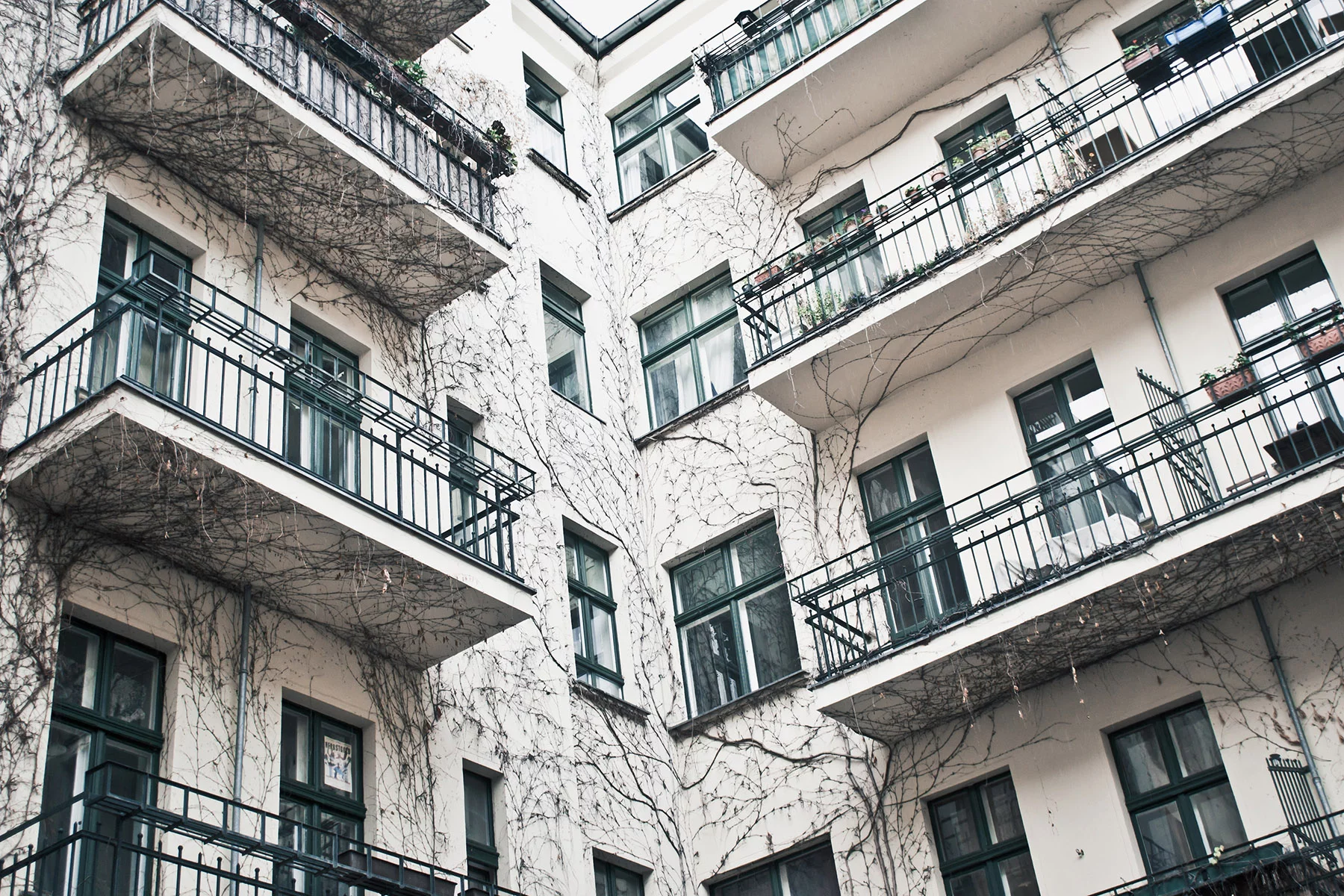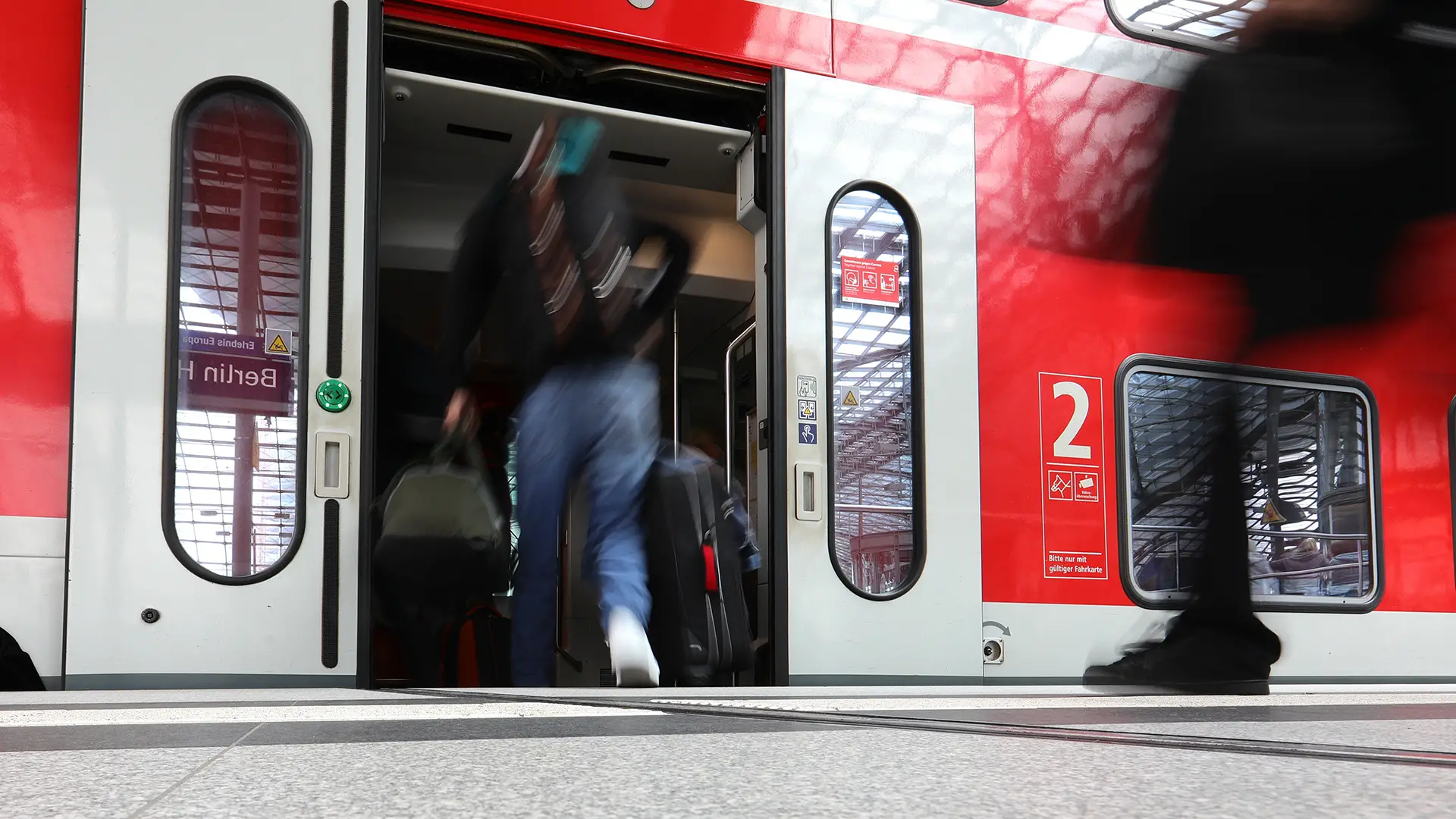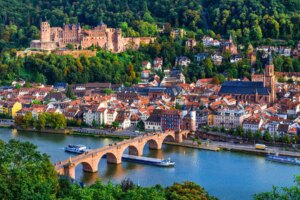Few places have a story to tell like Berlin. Although it has experienced ideological and physical divisions, like the Berlin Wall, today, it is a welcoming home to newcomers from Germany and all over the world. This German city is constantly reinventing itself while learning from its past.
Berlin’s evolution is clear from its immense urban renewal projects and looming gentrification. With so many different areas to choose from, it can be difficult to decide where to live.
Learn more about this thriving capital city and dive into the details, including:
Spotahome
Looking for somewhere to rent in Berlin? Spotahome takes the hassle out of househunting by doing the hard work for you. Their online platform lets you find, view, and book rental properties all from the comfort of your own home. Take the stress out of househunting in Berlin with Spotahome.
Berlin overview
Berlin is Germany’s vibrant capital, located in the northeast of the country. Known for its tumultuous past, the city has since transformed itself into a global hub of creativity, art, and technology.

Although it’s been over 30 years since the Berlin Wall fell, you can still see the marks of division in the city’s architecture and infrastructure. This divided past has led to distinct neighborhood atmospheres and varying prices across the city.
Berlin is an incredibly international city, drawing residents from around 170 countries. As such, it is an appealing home for internationals, especially as many companies there use English as their primary business language. The city also has a lower cost of living than other European capitals, such as London and Paris.
How to find housing in Berlin
Finding housing in Berlin can be challenging, as there is a high demand for property. There are several options for your house search, including estate agents (Makler) and online portals. As in any city, it’s important to be cautious and vet advertisements carefully, particularly if you don’t speak German fluently or are contacting people online.
Newcomers also need to check whether their new home will provide Anmeldung. This official residence allows you to register with the German government and access many government services. Short-term rentals often cannot offer this.
What is housing like in Berlin?
Berlin has a real mix of housing types. The center is primarily apartments, including converted townhouses, 100-year-old apartment blocks, and modern skyrise complexes. These buildings occasionally have private or shared gardens.

The types of accommodation vary immensely – for example, you’re more likely to find communist-era housing in the east of Berlin. Farther from the city center, you’ll find single-family homes and the odd mansion. Before you get as far as Potsdam, you can be out in the forest with no neighbors in sight.
Renting in Berlin
Approximately 85% of Berlin residents rent their homes, and the market value for rentals has been climbing quickly in recent years. Although there is a constant stream of apartments and houses coming up for rent, good deals disappear quickly.
Newcomers should expect to dedicate significant time to seeking, visiting, and applying for housing. Rent is typically most expensive in central districts like Mitte. Cheaper rents are available further from the city center, especially in the east.
How do I find a rental in Berlin?
Most people moving to Berlin find their rented accommodation through an estate agent or online property portal.
Rates for estate agents are quite high, though – three months’ rent plus VAT is standard. Agents usually represent properties rather than renters, so you may have to pay their costs. Ads online are sometimes listed as provisionsfreie, meaning ‘without agent’s fees.’
Fortunately, there are plenty of cheaper alternatives. For example, you can find rental accommodation on the following websites:
Those looking for short-term and serviced apartments can check out:
Flatshares (Wohngemeinschaft) are common, and sub-letting happens regularly. Remember, though: if your name isn’t on the tenancy agreement, you forfeit many of your rights as a tenant.

What does the renting process involve?
Whether you’re sharing or a sole tenant, expect to fill in a lengthy application form and provide supporting evidence of your status. You will usually need to include:
- your German credit report
- copies of photo ID and any residence permits or visas
- proof of income
- a certificate from your previous landlord indicating you have no outstanding rent due (Mietschuldenfreiheitsbescheinigung).
If you’re a new arrival and don’t have all the documents available, consider including a letter of recommendation from your employer and contact the rental agency to explain your situation.
Tenant rights are strong in Germany, but unscrupulous landlords are still out there. Your local tenant’s association (Mieterverbände) can advise and assist you if you wind up in a rental dispute.
Can I buy a home in Berlin?
There are no restrictions on expats owning property in Germany, but Berlin’s housing market can be limited. It’s often also less expensive for long-term tenants to continue renting rather than purchasing a property, as German law places strict limits on annual rent increases.
If you’re new to Berlin, consider renting when you first arrive so that you can get to know the different districts. That way, you can be sure to buy property in an area where you’ll enjoy living for the long term.
Berlin’s neighborhoods
Berlin has twelve official districts. Each district has its own character, and the vibe can even change from street to street. Whether you intend to settle down in the city with your family or change neighborhoods each year, you’re sure to find somewhere that suits you.

Since the fall of the Berlin Wall in 1989, new builds and standardized services have been eroding the former division between the East and West.
Today, you’ll find pleasant and exciting places to live on both sides of the old line. One of the few visible remaining differences is in the ceilings. An altbau (‘old building’) in former West Berlin will commonly have ceiling heights of 3.5m. Meanwhile, those in the plattenbau (blocky, panel-sided buildings) can be a full meter shorter.
Internationals live throughout Berlin’s neighborhoods. Young professionals tend to seek central districts close to the action, but higher prices have led many to look further out. Even families find homes in various districts, largely because there are international schools across the city. Charlottenburg, a pleasant leafy neighborhood in western Berlin, is an exception: it has been a home-away-from-home for expat Brits since World War II.
Mitte
Mitte is the German word for center, and it does not get any more central in Berlin than this neighborhood. It offers quick access to shopping and tourist sites like the Brandenburg Gate and Alexanderplatz. It is also where you will find the German parliament.
Mitte hosts many business locations and start-up offices, making it popular for those wanting to live near where they work. Several international schools are also located here, although many families opt to live in other areas with more space and fewer tourists.
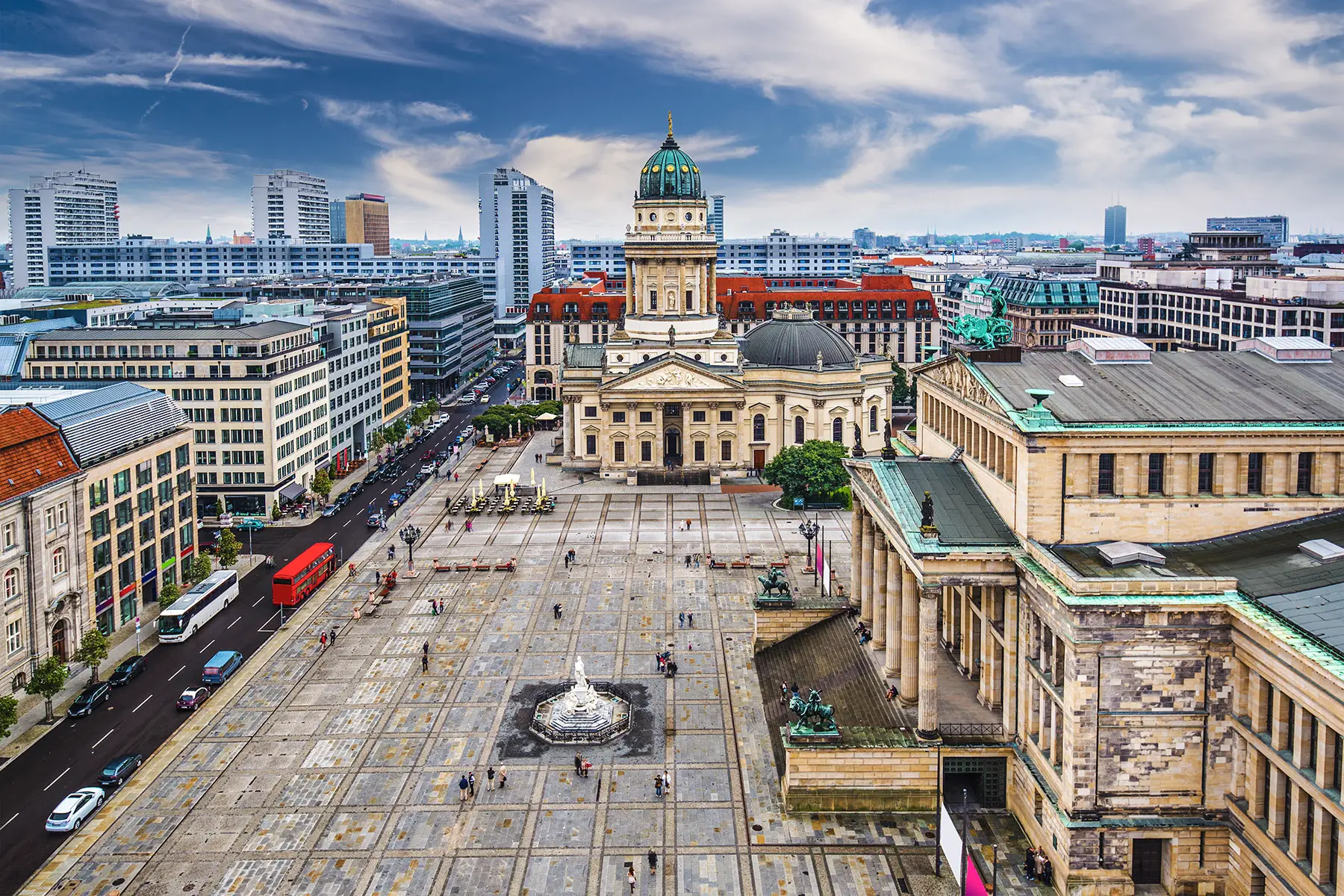
Housing costs are higher in Mitte than anywhere else in Berlin. Median rental rates run between €25.45/sqm for an older building and €36.60/sqm for new builds. Most homes are apartments, some of which are part of old townhouses.
Although Mitte is a dense urban area, residents can still find green spaces. The largest city park in the area is the Tiergarten. This leafy haven is often compared to Central Park in New York and covers over 200 hectares.
If you drive a car, bear in mind that parking is very limited and expensive in this area. Most commuters into Mitte rely on public transit to get around.
Pankow
Pankow stretches from near the city center out to the northeast. As a result, rental prices vary widely depending on how close or far you are from Mitte. This district includes Prenzlauer Berg, which is popular with professionals and young families thanks to its leafy streets, restored buildings, and boutique shops.
Further out in Pankow, families become increasingly common as housing prices lower. Although Pankow stretches right to the border of Brandenburg, it offers strong transport links to get around Berlin quickly. If car ownership appeals, you’ll find it easier to find parking as you move further from Berlin’s city center.
Pankow provides something for everyone – the Naturpark Barnim to the north offers fun outdoor activities, while nightclubs and bars closer to Berlin Mitte provide great nightlife.
Friedrichshain-Kreuzberg
Students, creatives, and young professionals flock to Friedrichshain-Kreuzberg for its mix of nightclubs, music venues, bars, and eateries. Gentrification has moved in more recently, particularly in Kreuzberg. Despite this, the area remains your best bet for finding counter culture in central Berlin.
Aside from partying options, this district is also home to hundreds of coworking spaces. This makes it a popular home for digital nomads and freelancers.

Recreation venues include quirky cafes, art galleries, and the Berlin Wall art park Mauerpark.
This district is very centrally located and well-served by a variety of transit options. As in many central areas of Berlin, car ownership is uncommon, but there is still plenty of traffic. Walking, cycling, buses, and urban rail via S-bahn and U-bahn routes are the best modes of transportation between Friedrichshain-Kreuzberg and other parts of Berlin.
Charlottenburg-Wilmersdorf
Charlottenburg-Wilmersdorf is in the west of Berlin. This area is home to Charlottenburg Palace, surrounded by lovely baroque gardens. This district also hosts numerous parks and walkable residential areas.
The district has been attracting English-speaking expats since the end of World War II. It’s still popular with British arrivals in Berlin, as the British school is located here.
Charlottenburg is still very central, located just west of Mitte. From here, residents have easy transit connections via bus or urban rail. On the other hand, Wilmersdorf is slightly further out and has fewer transport links. The least well-connected part of Wilmersdorf is Grunewald, in the west.
Median rental prices in this area are €18.85/sqm. Although it’s more expensive than living in Mitte, it is still a relatively affluent area.
Tempelhof-Schöneberg
Located south of Mitte, Tempelhof-Schöneberg continues further south to the edge of Berlin. It’s a mix of suburban and countryside living – the district is home to the Tempelhofer Field, a former airport converted into an expansive city park.
You’ll find many families making their homes in this area. Not only are median rents lower in Tempelhof than in other central Berlin districts, but the nearby Berlin and Alexander von Humboldt International schools are an additional draw.
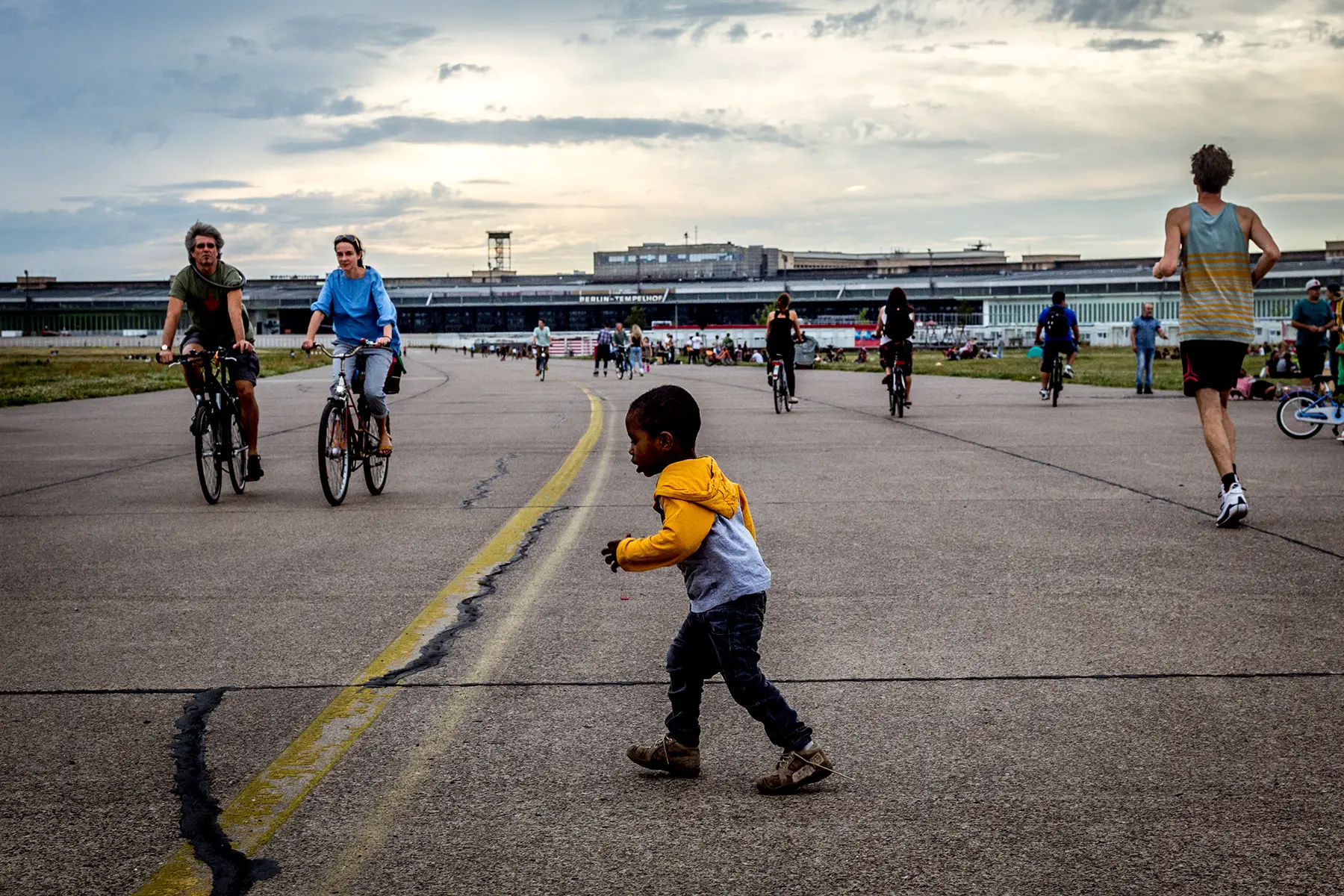
Families seeking more space and access to parking for car owners will find it as they move south away from the city center. Transportation links are also available from here to neighboring Potsdam, making this area popular for commuters and those wanting easy access to the cultural offerings of both cities.
Spandau
Spandau lies on the western outskirts of Berlin. This area is a favorite among those who appreciate nature and a quieter pace of life. That’s not all that makes it a great choice for families – the Swiss International School is also near the border between Spandau and Charlottenburg-Wilmersdorf.
If you’re thinking about moving to Spandau, it’s good to know that it’s quite a long way from the action of Berlin’s central districts. Many Berliners complain that it takes ages to go from Spandau to anywhere else, so it can feel like a separate town.
In reality, regional trains take less than 20 minutes to reach Berlin Hauptbahnhof from Spandau’s railway station. However, it’s worth considering the distance you’ll need to travel from your home in Spandau to the station when judging your commute.
Spandau offers a range of housing, from apartments in historic buildings to detached houses in smaller villages. The median rental price here is €11.35/sqm.
There are many sports and leisure areas in this district, including running and hiking trails in Spandauer Forst. If you love the outdoors and can deal with a longer commute, Spandau is a good option.
Lichtenberg
Lichtenberg is a primarily residential district in former East Berlin. Running in a strip from north to south, it borders Pankow, Friedrichshain, and Treptow. This neighborhood tends to attract diverse residents, including immigrants, students, and working-class Berliners.
This district, once at the heart of residential East Berlin, is home to many GDR-era housing estates known as Plattenbau. Housing here is typically more affordable than other areas in Berlin, and, as with other districts, prices decrease the further you move from Mitte.
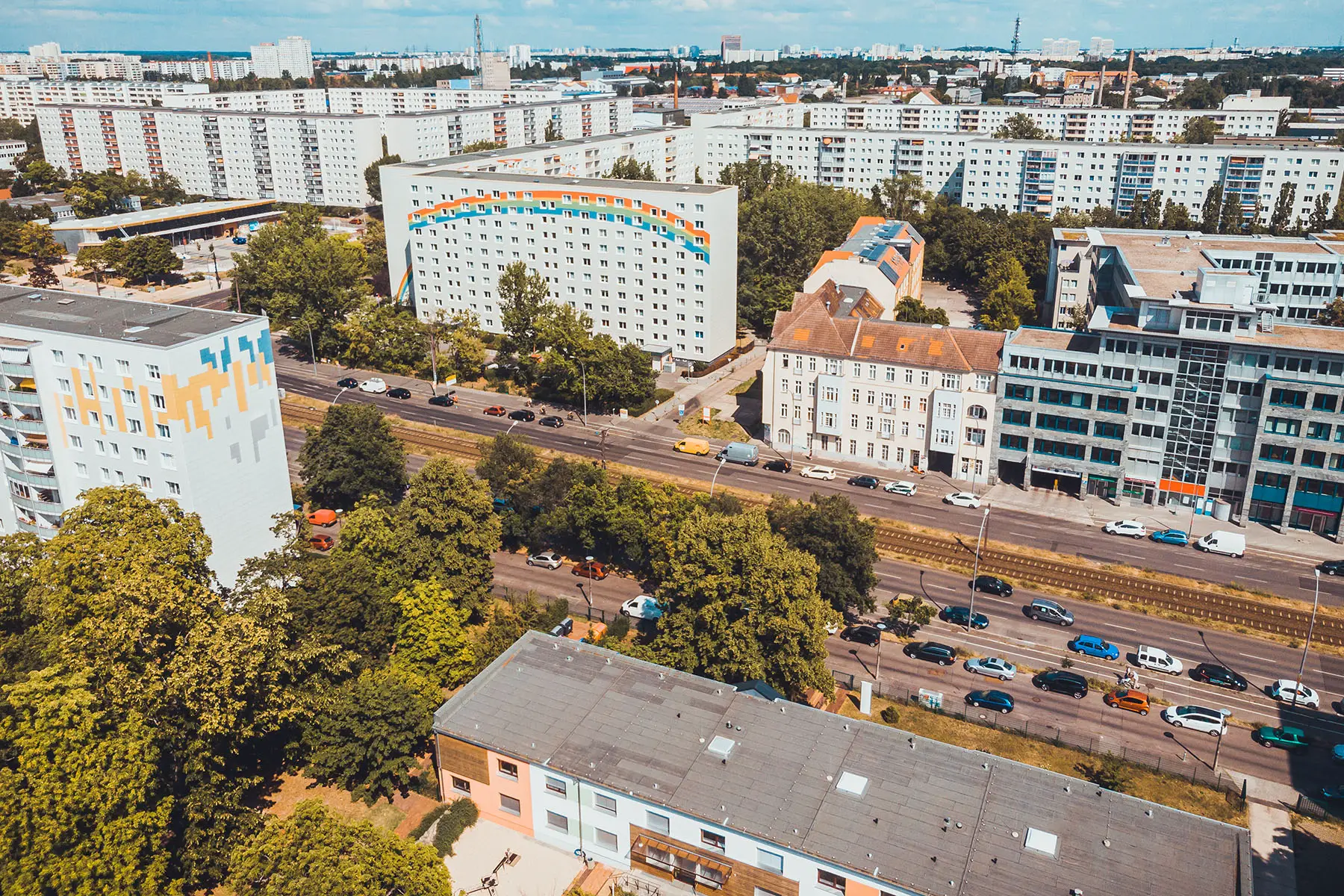
Lichtenberg is a quiet district, especially when compared with neighboring Friedrichshain. You’ll find more family homes, large chain shops, and shopping centers in this area than elsewhere in the city.
Commuting into central Berlin districts is straightforward via bus or urban rail. The Lichtenberg train station also hosts international train routes, primarily to Poland and Hungary.
Recreation consists of small parks and river walks, though you’ll also find one of Europe’s largest zoos, the Tierpark.
Neukölln
Neukölln is a quickly gentrifying favorite for new arrivals looking for the next up-and-coming neighborhood. The areas closest to Tempelhof and Kreuzberg tend to be the most modern, while areas further south are grittier and less expensive. Neukölln used to be the place to find cheaper rent in central Berlin, but these days you’ll find young professionals living here along with starving artists.
The whole district is well served by buses and urban rail, making it quick and easy to get around Berlin from Neukölln.
The district is also home to a large Turkish and Arabic-speaking community, who have inspired and set up many of the restaurants and supermarkets in the area.
Reinickendorf
Reinickendorf is a large district north of Mitte that offers a little of everything. It’s home to several international businesses – large global companies like Bosch and MAN have offices here.
However, there’s also something for nature lovers in Reinickendorf, as it’s almost a third forest or water. The district is home to the second largest lake in Berlin, and the Dicke Marie oak, the city’s oldest tree.
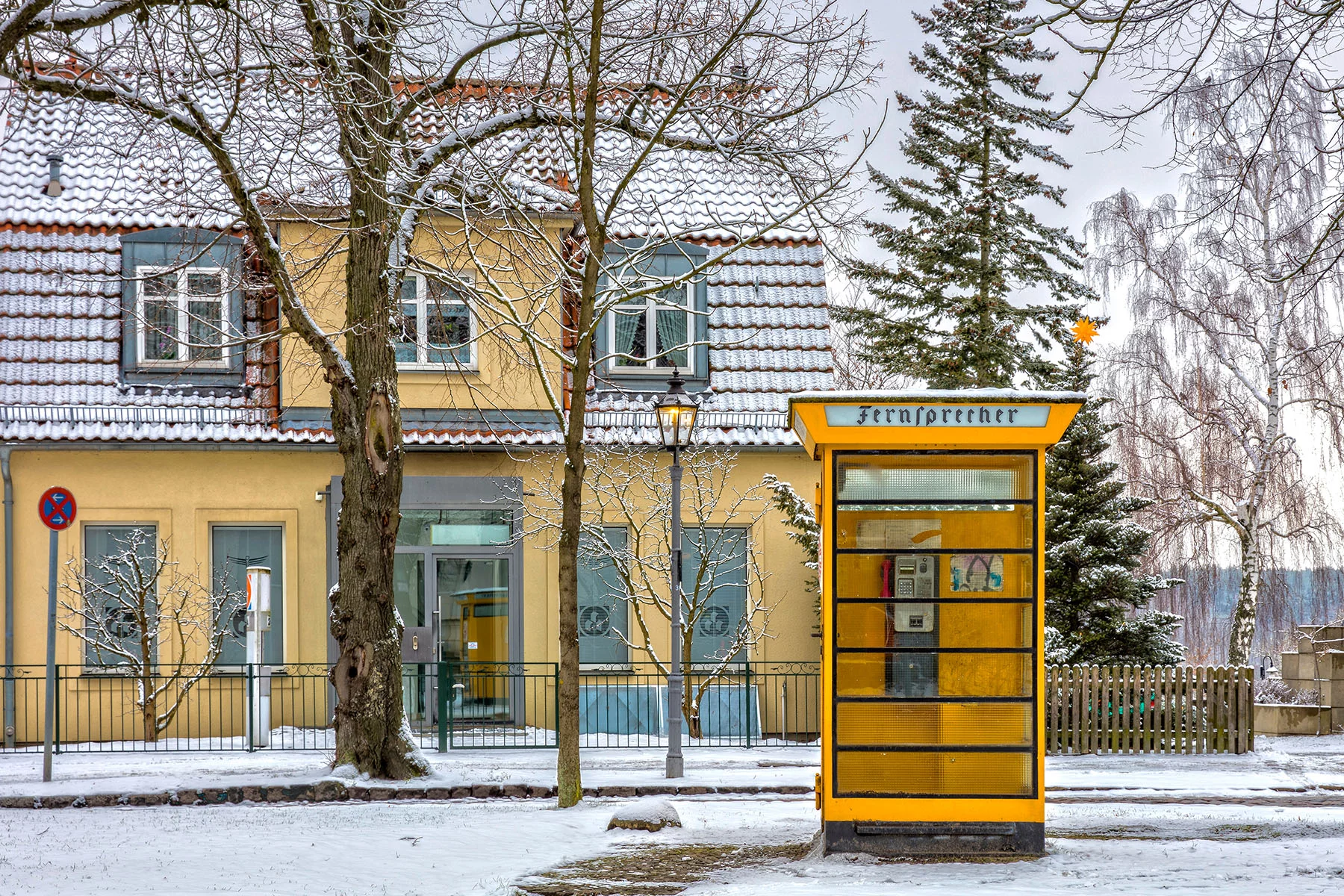
Housing costs here are moderate. Some dense housing estates offer apartments, but you can also find detached houses.
Driving is also common in this district, and many homes have driveways or on-street parking included. However, this also means traffic can cause headaches at peak times. If you’d rather avoid the bottlenecks, you can take urban rail and bus services, which connect Reinickendorf with the rest of Berlin. Cycling is also a popular option.
Treptow-Köpenick
This district is the largest by area in Berlin. Treptow-Köpenick offers a leafy, almost rural setting, which appears at first glance to be mostly forest. It’s a great place to live if you want to enjoy natural surroundings while still living in a city.
Transit options serve this district, but more distant sections can involve an hour’s commute or longer to Mitte. A car or bike can be useful, and parking is often free.
Those considering Treptow-Köpenick who want more urban vibrancy should check out the areas adjacent to Kreuzberg and Neukölln.
Steglitz-Zehlendorf
While still within easy reach of Berlin’s central districts, Steglitz-Zehlendorf offers homes nestled among lakes and forests. The neighborhood is large and varied, with industry, outlet malls, and even surprisingly wild natural areas.
Families, in particular, appreciate Steglitz-Zehlendorf for its many international schools. The BBIS Berlin Brandenburg International School is just outside the Zehlendorf boundaries.

Apartments, townhouses, and detached houses are all available in Steglitz-Zehlendorf. While not an inexpensive district, housing prices run slightly lower than in other upscale family areas like Charlottenburg.
Commuters can easily connect from here to central Berlin districts or neighboring Potsdam.
Marzahn-Hellersdorf
Marzahn-Hellersdorf is in the far east of Berlin, just past Lichtenberg. This district retains a significant proportion of communist-era housing blocks. There are often parks, canals, and rivers between them. To the east, Berlin’s boundaries give way to farmland and forests.
Driving is more common in this area, and many houses have on-street or driveway parking. However, the district also has bus, urban rail, and regional rail lines to the rest of Berlin and beyond.
Which neighborhoods should I avoid in Berlin?
Berlin is generally a safe city to live in, but it does have more reported crime (in German) than any other region in Germany. This is likely due to it being the country’s largest city.
The highest crime rates (in German) are in:
- Mitte
- Freidrichshain-Kreuzberg
- Charlottenburg-Wilmersdorf
However, this does not necessarily mean that these areas are to be avoided – Mitte, in particular, has a higher population density and more tourists than other districts. Meanwhile, Alexanderplatz is extremely popular with visitors, yet it has a reputation for crime and racial profiling by police.
Useful resources
- Berlin.de – official website of the city of Berlin
- Police Crime Statistics – German government reports on crime by year



